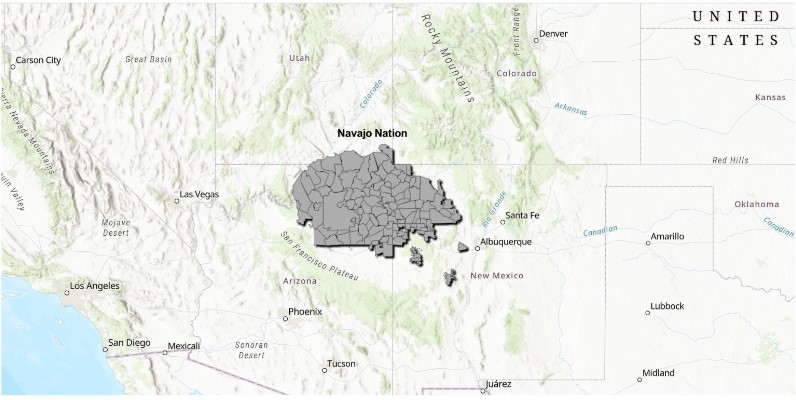The location of the Navajo Nation granted them access to several river basins including the Upper Colorado River Basin, the Lower Colorado River Basin, and the Rio Grande Basin. The major rivers that flow through Navajo are the San Juan River, the Colorado River, and the Little Colorado River [1]. However, despite the geographical location of Navajo Nation, most of the reservation is still dry and arid land. Most of the waters accessible to the Diné people are unfortunately unusable for various reasons, one of which and a major reason is water contamination.
The major event that contaminated Navajo Water sources started from the beginning of World War II to 1971. The Navajo Nation is located on top of rich uranium and other various mineral mines. As World War II began, the demand for minerals and uranium drastically increased, the United States government started purchasing large amounts of uranium from sources within the U.S, and eventually mines were opened on Navajo land. Although opening mines in the Navajo Nation provided employment opportunities and boosted the nation’s economy, miners were not well informed about the dangers of uranium mining and were not provided with proper equipment and protections against radiation [2]. In addition, as mining continued, the mines ultimately made contact with underground aquifers, which are underground freshwater sources often used for wells. As a result, radioactive materials contaminated these water sources and made them hazardous for consumption. Besides uranium, certain Navajo water sources are also contaminated with various other metals such as arsenic, lead, and iron due to extensive mining [3].
Today, around 40% of the remote Navajo population does not have access to running tap water, and many are dependent on local, unregulated water sources to meet their needs for water. Many of these families are required to drive for hours to haul water from local water sources, and are forced to minimize their daily water usage [4][5]

Works Cited:
[1] Navajo Nation | Tribal Water Uses in the Colorado River Basin. (n.d.). http://www.tribalwateruse.org/?page_id=132#:~:text=The%20Navajo%20Nation%20has%20claims%20to%20waters%20from
[2] Brugge, D., & Goble, R. (2002). The history of uranium mining and the Navajo people. American Journal of Public Health, 92(9), 1410–1419. https://www.ncbi.nlm.nih.gov/pmc/articles/PMC3222290/
[3] Beamer, P. (n.d.). “Water Is Our Life”: How a Mining Disaster Affected the Navajo Nation. Truthout. https://truthout.org/articles/water-is-our-life-how-a-mining-disaster-affected-the-navajo-nation/
[4] Water is flowing: Bringing running water solutions to Hopi and Navajo homes. (n.d.). MSN. https://www.msn.com/en-us/news/us/water-is-flowing-bringing-running-water-solutions-to-hopi-and-navajo-homes/ar-AA12ru4k#:~:text=Up%20to%2040%25%20of%20households%20in%20remote%20parts
[5] (n.d.). Ecology and Environment, inc. https://www.epa.gov/sites/default/files/2016-06/documents/2011-04-21-necr-wells-final-report.pdf